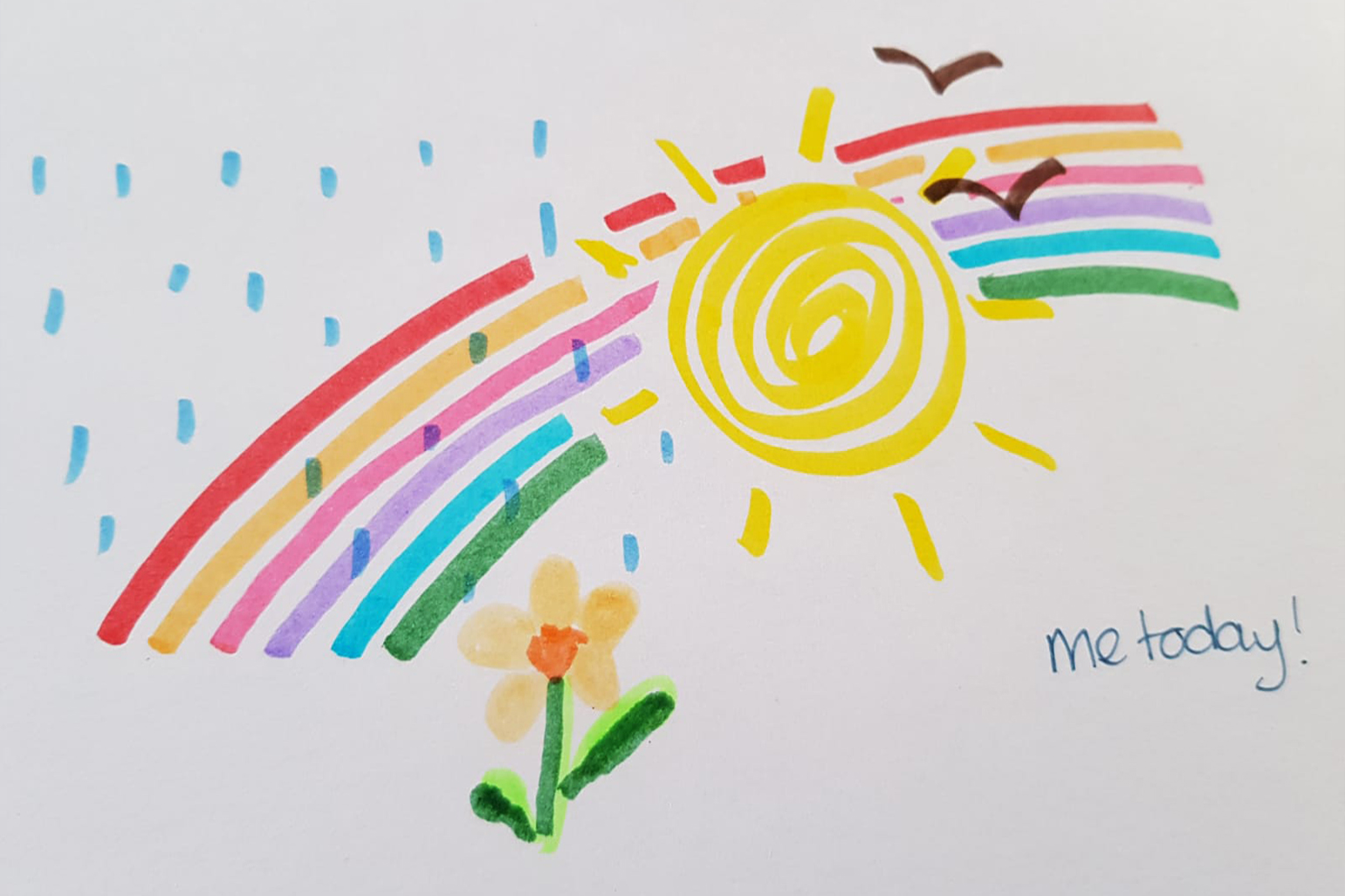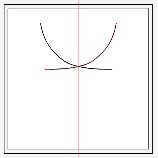
Observational drawing
Those two words might sound intimidating, but this is fun to do, and is all about looking, not about getting any particular result.
Paper and pencil or pen is all that’s needed.
Arrange a number of objects together in the centre of a table. You could use a vase or jug, teapot or large jar, perhaps containing flowers or foliage, or wooden spoons & other kitchen implements, to go in the middle.
Put some small objects - toys, bottles, cups, stones, shells, or any little things around the base of the jug, or even conceal them in the foliage [or spoons!] - the idea is that from any position around the table you cannot see all the objects, some things will always be out of sight.
Choose a starting point, and make a drawing of what is in front of you. Don’t worry too much about accuracy, unless you really want to – but try to include everything that is in your line of vision, however sketchily.
Now move to the other side of the table, and do this again. You are drawing the same collection of things, but from a different perspective. See the examples below:
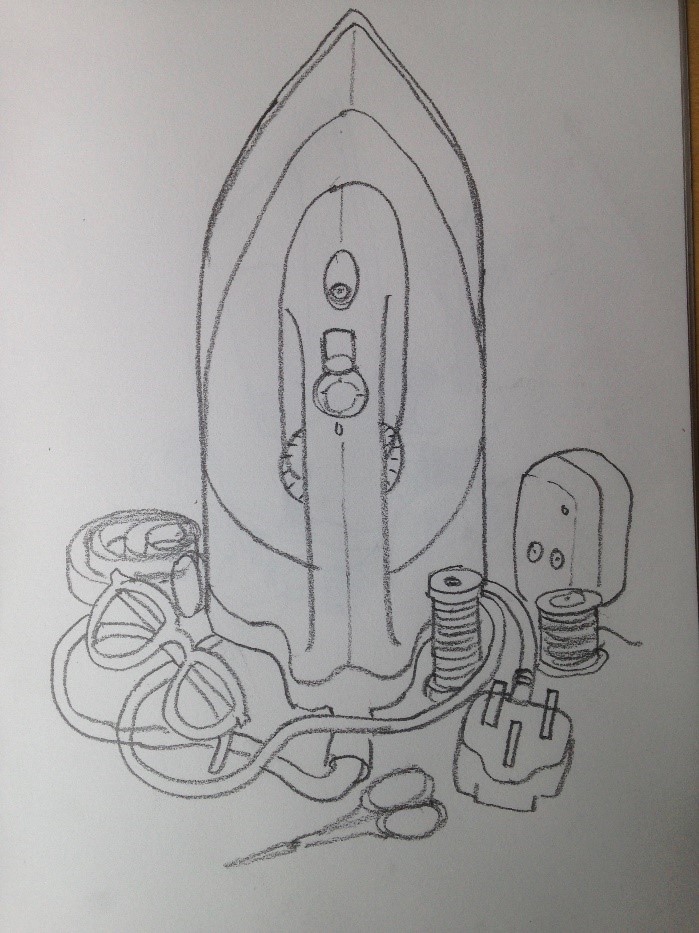
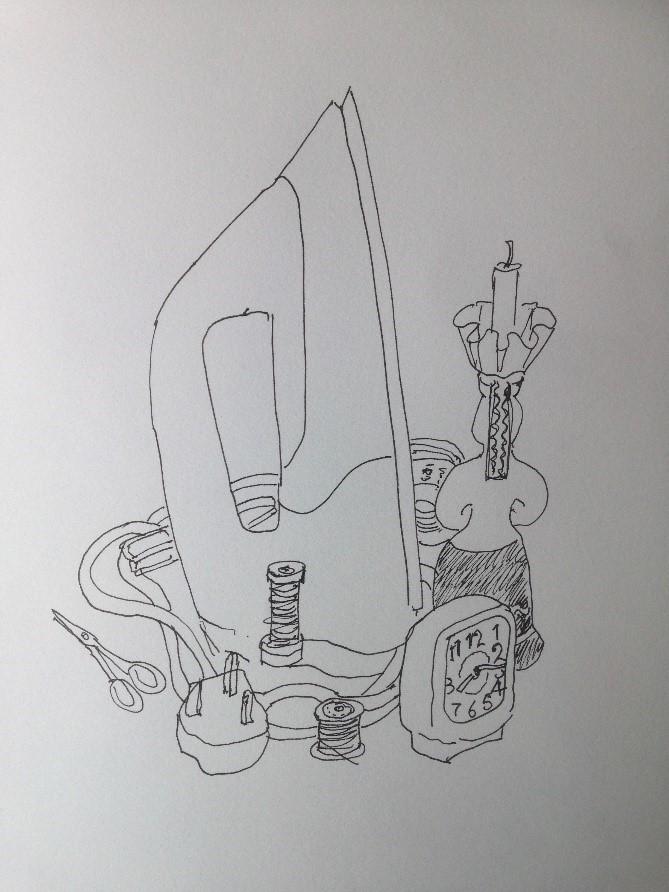
If you have enjoyed this, repeat from as many angles as you like, or you could try making your drawing in to a painting.
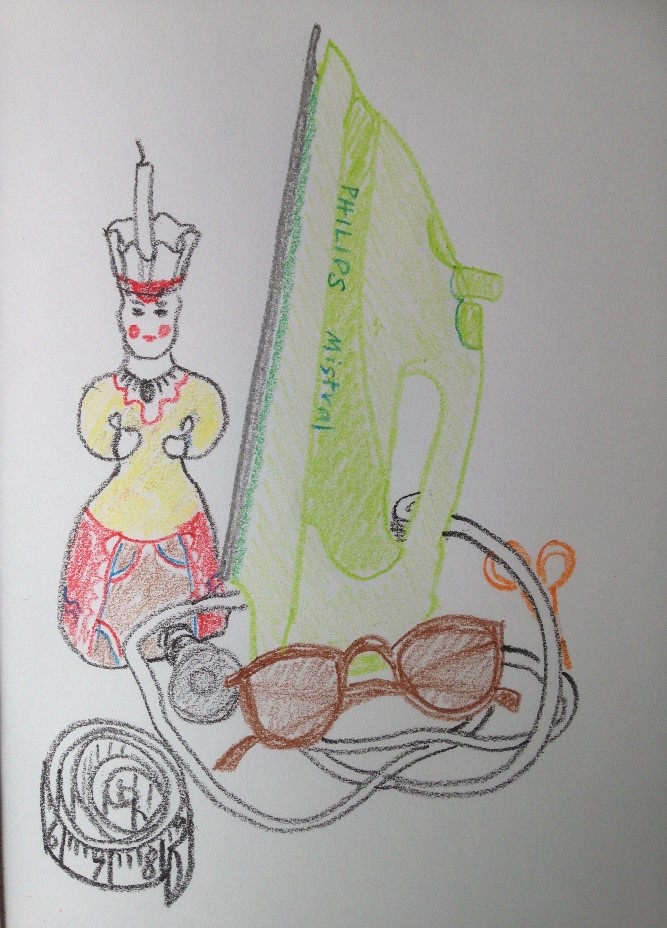
A variation on this exercise is to look at, and draw, what’s known as ‘negative space’. This means the shape that is made in the air by the objects you have arranged on your table.
Give it a try!

